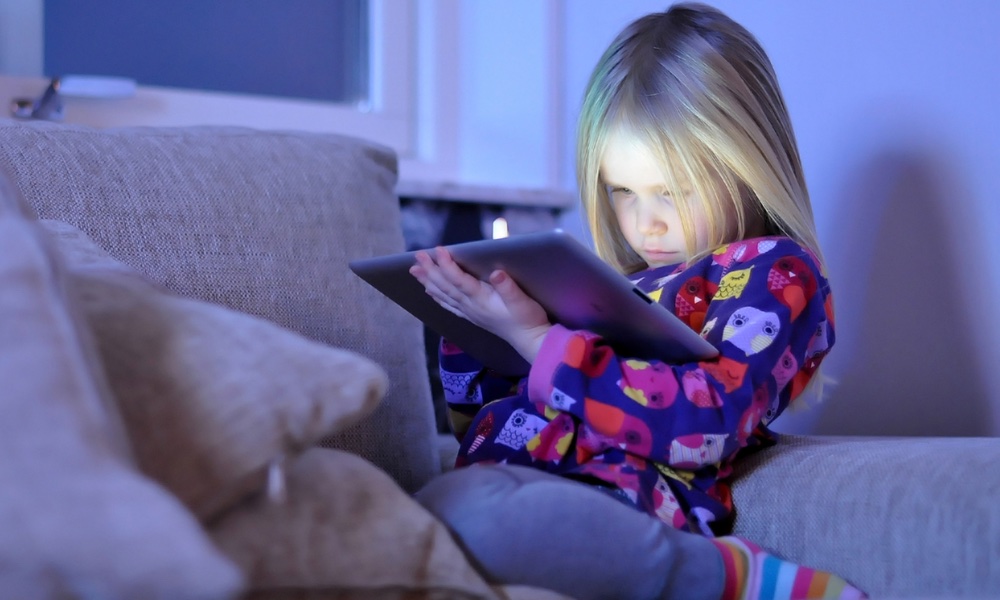It's probably not news to many of us that when kids spend lots of time sitting in front of a screen, it does not do good things for their mental health. In fact, the U.S. Surgeon General recently urged Congress to put warning labels on all social media platforms similar to those found on cigarette packs.
A study in Denmark and the United Kingdom offers us a better idea of the right amount of recreational screen time for kids at different ages.
Prior research showed that children in Denmark spend on average 7 to 8 hours daily using their personal electronic devices. In this current study, researchers from the University of Southern Denmark set out to see if dramatically reducing kids' screen time would improve their mental health.
The trial involved 181 children. Eighty-six were placed in the intervention group and 95 were in the control group. Children in the intervention group were, on average, 8.6 years old, and 49 percent were girls. In the control group, the children were 9.5 years on average, and 60 percent were girls.Taken together, the findings suggest that reducing leisure screen time positively impacts children's mental health.
All the children were tested using the “Utilizing the Strengths and Difficulties Questionnaire,” which helped the researchers measure the participant's social skills, general behavior, emotional stability and overall mental health.
The children from 45 families were told to restrict their use of electronic devices to just three hours a week over the course of two weeks. The three-hour limit applied specifically to leisure time spent online. It did not include necessary screen use for school or homework, lead researcher, Dr. Jesper Schimidt-Persson from the University of Southern Denmark, emphasized.
This distinction is crucial, he added, because it focuses on moderating recreational screen use rather than eliminating all screen time.
Video monitors were installed in the participants' homes to ensure the rules were followed.
After the two weeks, the kids filled out the same questionnaire. Were there any differences? Definitely.
The researchers found significant improvements among the group that reduced their screen in the children's social skills, including reduction in behavioral problems and in the way they dealt with emotional issues.
Kids who spent less time online significantly decreased their tendency to internalize or personalize emotional problems and peer issues, a major indicator of mental health. In the intervention group, internalizing scores dropped by an average of 1.03 points.
Prosocial behavior scores, which assessed positive social interactions, went up by 0.84 points in the intervention group. Taken together, the findings suggest that reducing leisure screen time positively impacts children's mental health, making them more social and less likely to ruminate.
The study had a few limitations. In addition to its small size, the short-term intervention may not reflect long-term habits and parent-reported measures might be biased. Also, the study involved highly motivated families. Not all families may be as compliant.
If you're looking for practical ways to support your kid's mental health, this study offers direction. It's not easy to get your children off their screens, but it can be done. You can try easing into it by creating tech-free zones or times, such as during mealtime or one night a week. You can also discourage use of media entertainment while they're doing homework, or insisting on no exposure to devices or screens one hour before bedtime.
The American Academy of Pediatrics has established recommendations for children's media use. They advise:
- For children under 18 months, except for video chats, avoid exposing little ones to screens. Screen-based media can interfere with sensory processing.
- For children 18 months to 24 months, parents should choose high-quality, age-appropriate programming and watch the shows with their children.
- For children 2 to 5, limit screen time to one hour per day of high-quality programming.
- For children 6 and up, establish consistent limits on the time spent using media and the types of media.
The study is published in JAMA Network Open.





